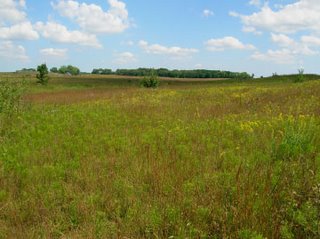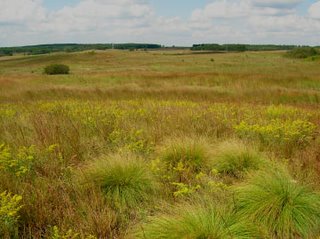Mighty Aphrodite
(With apologies to Woody Allen)
Every so often, a day happens that makes it feel as though I am exactly in the right place and time. Yesterday was one of those days. I am doing conservation work with a species of butterfly called the Aphrodite. It’s a beautiful tawny orange butterfly on the top side of its wings. Underneath, the wings are chocolate brown with metallic silver spotting. It’s a large butterfly, about the size of a monarch.
Aphrodites are common in parts of their range, but in Illinois, they are restricted to large upland prairies. The larvae feed on arrow leaved violet, which grows in sandy soil. There are few such places remaining in Illinois today. Yesterday, I was out collecting female Aphrodites at a place about 100 miles west of Chicago called the Nachusa Grasslands.

Nachusa Grasslands
After a week of cool rain and drizzle, yesterday’s bright sunshine and temperatures in the upper seventies made for a great day to be out on the open road. I ventured far enough west of the city that I was able to pull in my choice of two country and western radio stations (country radio in Chicago itself pretty much sucks). Arriving at Nachusa, I found the prairie spread out before me dappled in sun and shadow, and blooming with goldenrod, Joe Pye weeds, and blazing stars. My fate would be to spend the afternoon walking about in the splendor of this location, attempting to catch female Aphrodites. It was one of those times that I marvel that I actually get paid to do this stuff.

More Nachusa
Aphrodites are in the genus Speyeria, a group of butterflies that is difficult to work with. Several species are endangered. I hope to begin working with regal fritillaries in the next couple of weeks. My friends Erin at Woodland Park Zoo in Seattle and Mary Jo at the Portland Zoo are working with the Oregon silverspot, an endangered Speyeria from the Pacific Northwest. Many of the Speyeria emerge in early summer and begin feeding and mating. After a few weeks, many of these species then go into a period of summer dormancy called aestivation. It isn’t until late in the summer that they begin laying eggs. By then most of the males have died. The eggs hatch and, after eating the eggshell, the baby caterpillars hibernate over the winter. I have tried releasing newly hatched caterpillars into the field, without much success. So this year I am going to try to keep them over the winter in the lab.
Throughout the afternoon, I was treated to beautiful displays of rough blazing stars in full bloom. If you look carefully in the background of the picture you can see one flowering spike that is pure white. I have probably spent too much time looking on the blazing stars for Aphrodites. The ones that I found were all patrolling very low through the grass, looking for places to lay eggs. The blazing stars were covered with monarchs, just beginning to mass here for their migration south to Mexico. The monarchs make it a bit harder to find the Aphrodites, because they are about the same size and are similarly colored. But there are a lot more of them, so the Aphrodites kind of get lost in the crowd.

Rough Blazing Star

There were monarchs all over this hillside
One of the frustrating things about working with Aphrodites is that by August and September, the time when they are ready to lay eggs, they are really hard to find in the field. I have had poor success in obtaining them for both of the last two years. This year would prove to be far luckier. I got my first one, a female no less, only 20 minutes after parking my car. The butterflies that I collected are currently in egg laying cages. I hope they begin producing soon, and will post about the outcome.

Egg Laying Cages
In unrelated news, the swamp metalmark caterpillars are eating and growing like crazy.
Labels: Butterflies, Collecting, Conservation


5 Comments:
your blog and photos are lovely, Doug. I enjoy reading about the topics therein.
aestivation! Fanstastic word!
and so useful for those living in Arizona.
I know we were supposed to focus on the butterflies, but I loved the picture entitled "Rough Blazing Star". The sky/land ratio, colors, flowers make it quite a remarkable picture. beautiful!
I used to live near the Nachusa grasslands! Thanks!
lemuel- Thanks for the compliment. I struggle with my photography. Mainly I don't have the time to get really good at it, much as I would like to. The blazing stars at Nachusa are amazing. There are acres and acres of them.
Benton- I didn't think that anyone actually lived near Nachusa. We're talking significan BFE territory here. What town did you used to live in?
I lived in Grand Detour which is north of Dixon.
Post a Comment
<< Home